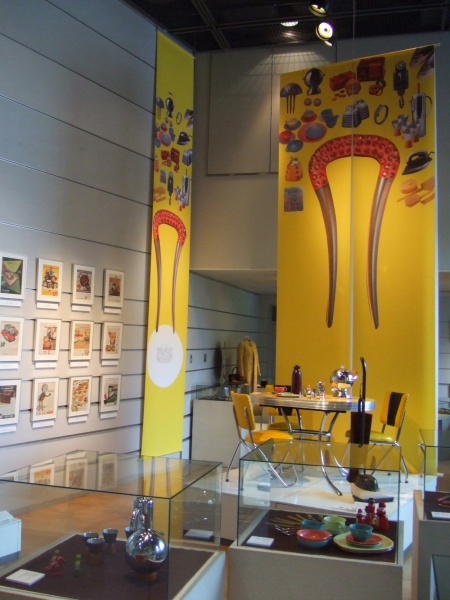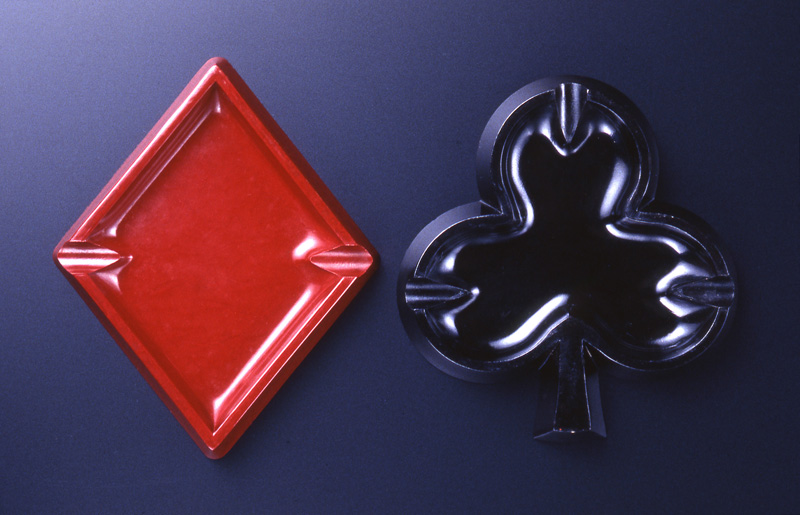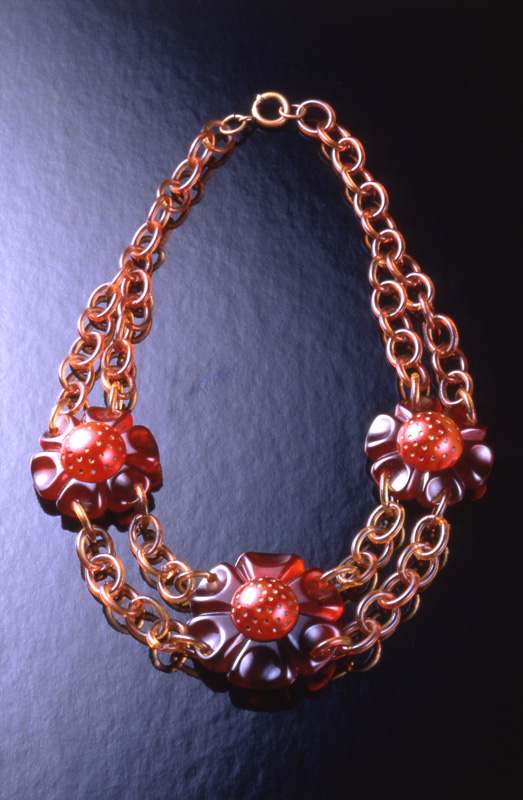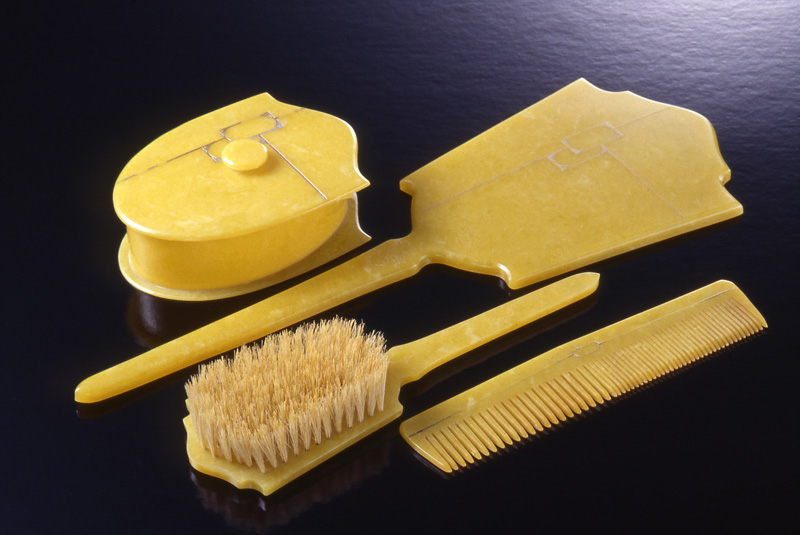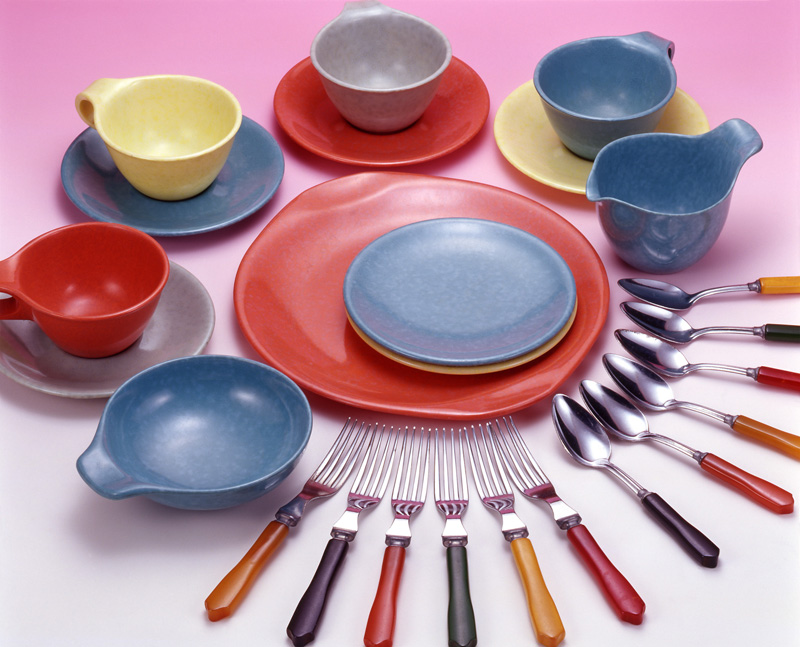- home>
- reports>
- american art deco collection>
- 1930s Designs for Plastic−Art Deco’s Star Material
| 2014.05.01 |
|
Collection Exhibition Series Vol.12
1930s Designs for Plastic−Art Deco’s Star Material
As everyone knows, plastic is a material that appeared with the technological innovations of the end of the 19th Century, conquering the world in the 20th Century. Its characteristic bright colors and ease in forming opened up possibilities for the design world unobtainable by traditional materials. Especially for the United States, where the craze for art deco in the 30s and 40s occurred along with the rise of individualized design objects, plastic had a great influence on the American lifestyle in later years.
The history of plastic goes back to mid 19th-century Europe. Its development began with natural gum. In 1884 Paris Worlds Fair, rayon was displayed. In 1907, phenolic resin, called a perfect composite material using no natural resources, was developed in the U.S., and along with advancements in the speed of manufacturing technology, numerous and various plastic materials like bakelite, lucite, nylon and vinyl chloride were introduced into the market. These advanced materials were incorporated into many fields, where their special features like transparency and the power of expression granted by their strength and color.
For instance, bakelite, used in radios, the media leader in the 1920s and 30s, was not just functional in this field, but also highly ornamental, and allowed for the concept of radio as a fashion item that could serve as interior decoration. Because of the freedom in forming plastics, the boldly adopted streamlined shapes and unique colors elevated tools like radios to collection item status.
Moreover, for plastic kitchen items, sturdy and easy to keep clean, unlike ceramics and metal, the new material allowed for freedom in applying color and texture, and made dining tables lighthearted, giving them a bright freshness that traditional materials could not.The sensibility filled with the hues that nearly overwhelmed the kitchen space gained popularity into the 1950s, but the representative colorful Residential Dinnerware, designed in 1940 by Russel Wright became a huge hit with young couples.
Thanks to the rich expressiveness of plastic, it also wielded a great deal of power in the fashion industry. Against the backdrop of women’s social advancement, plastic was even more quickly incorporated into the expanding jewelry field, where items like accessories and baubles, initially treated as high priced items featuring precious stones, in the 1930s began appearing in plastic in great quantities, capitalizing on the forms and colors made possible by the new material.
■Exhibits
Arwin Radio, Poker Tips, Alarm Clock and Bracelets/Era: 1930s (Left)
Ashtrays/Era: 1930s (Right)
Plastic Necklace/Era: Latter 1930s (Left)
Handy Vacuum Cleaner/Era: Early 1940s (Right)
Dresser Set/Era: Early 1930s (Left)
Steam Iron/Year: 1936 (Right)
Coffee Server/Year: 1937 (Left)
Celluloid Hair Ornament/Era: Latter 1920s (Right)
Residential Dinnerware and Bakelite Cutlery Set/Era: 1930s, 1950s (Left)
Celluloid Earrings/Era: Early 1930s (Right)
Perfume Bottle Case/Year: 1937 (Left)
Lighter/Era: Mid-1930s (Right)
Design Museum Collection Exhibition Series vol.12
1930s Designs for Plastic−Art Deco’s Star Material
In this volume, we exhibited about 100 artifacts from the daily life of the 1930s, turning our attention to plastic, a new material at the time that permeated society and greatly influenced design. Looking back on the 1930s, when plastic proliferated as the material of mass culture, modernizing society and brightly coloring daily life, this exhibit presented the sense of design and the energy that infused society thanks to the development of this new material.
Period: March 14 – April 22, 2007
Venue: Design Museum, International Design Center NAGOYA
Organizer: International Design Center NAGOYA Inc.
- Report: Nagoya, UNESCO City of Design Promotion Projects FY 2013
- Report: creators shop Loop(Fourth and Fifth Session)
- Report: 2013 Nagoya City Emergency Job Creation Projects
Creative Industry Cooperative Promotion Projects - Report: Corporate Support・Design Planning and Production FY 2013
- Report: IdcN Design Promotion FY 2013
- Report|Design Tour: Fun with the Classics at Yokiso’s Choshokaku
- Electric Media: The Age of Radio
- Ziggurat Design 30s “American Art Deco and Skyscrapers”
- “LIFE” | America: Birth of Photojournalism Magazine
- American AD of 1930s | Lifestyle and Products
- Electric Dream: Household Electric Appliance and Modern Life
- Posters from the 30s: Modern Life and Graphic Design


